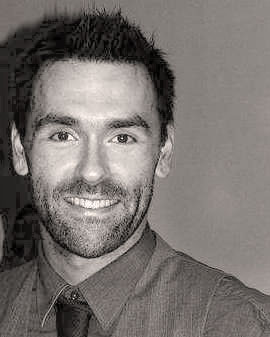 |
 |
 |
 |
 |
 |
 |
 |
 |
 |
 |
 |
|
Talks & Events
|
Ph.D. Thesis Defenses: 2014
Measuring Gravitational Lensing of the Cosmic Microwave Background by Galaxy Clusters Constraining Neutrinos and Dark Energy with the Angular Clustering of Galaxies in the Dark Energy Survey PhD Committee members: Joshua A. Frieman, Scott Dodelson, Wayne Hu, Don York "Over the last decade, cosmological observations have placed increasingly stringent upper bounds on the masses of neutrinos, while observations of neutrino oscillations imply a lower bound. Alan’s thesis provides a detailed forecast of the constraints that the Dark Energy Survey (DES) will be able to place on neutrino mass in the next few years, accounting for uncertainties in dark energy and in the relative amplitude of galaxy clustering. He finds that DES has a good chance of shedding light on the pattern of neutrino masses (the mass hierarchy), an exciting possibility. His results will be of broad interest to cosmologists." - Joshua A. Frieman, PhD advisor Thesis Abstract: We determine the forecast errors on the absolute neutrino mass scale and the equation of state of dark energy by combining synthetic data from the Dark Energy Survey (DES) and the Cosmic Microwave Background (CMB) Planck surveyor. We use angular clustering of galaxies for DES in 7 redshift shells up to $zsim 1.7$ including cross-correlations between different redshift shells. We study models with massless and massive neutrinos and three different dark energy models: lcdm ($w=-1$), wCDM (constant $w$), and waCDM (evolving equation of state parameter $w(a)=w_0 + w_{a}(1-a)$). We include the impact of uncertainties in modelling galaxy bias using a constant and a redshift-evolving bias model. For the $Lambda$CDM model we obtain the best upper limit for the sum of neutrino masses from DES+Planck of $Sigma m_ u < 0.08$ eV (95\% C.L.) for a fiducial mass of $Sigma m_ u = 0.047$ eV, assuming perfect knowledge of galaxy bias. For the wCDM model the limit is $Sigma m_ u < 0.10 $ eV. For a wCDM model where galaxy bias evolves with redshift the upper limit on the sum of neutrino masses increases to 0.19 eV. The upper limit on $Sigma m_ u$ does not change much when we allow $w$ to vary with redshift, once we include a redshift-evolving galaxy bias model, with a limit of $Sigma m_ u < 0.20$ eV. DES will be able to place competitive upper limits on the sum of neutrino masses of 0.1-0.2 eV and could therefore strongly constrain the inverted mass hierarchy of neutrinos. In a wCDM model the 1$sigma$ error on constant $w$ is $Delta w= 0.03$ from DES galaxy clustering and Planck. Allowing $Sigma m_ u$ as a free parameter increases the error on $w$ by a factor of $sim$2, with $Delta w=0.06$. In a waCDM model, in which the dark energy equation of state varies with time, the errors are $Delta w_0 = 0.2$ and $Delta w_a = 0.42$. Including neutrinos and redshift dependent galaxy bias increases the errors to $Delta w_0 = 0.35$ and $Delta w_a = 0.89$. The resulting uncertainty in galaxy bias parameters varies between 3-5 \% for all our cosmological models that include massive neutrinos. |

